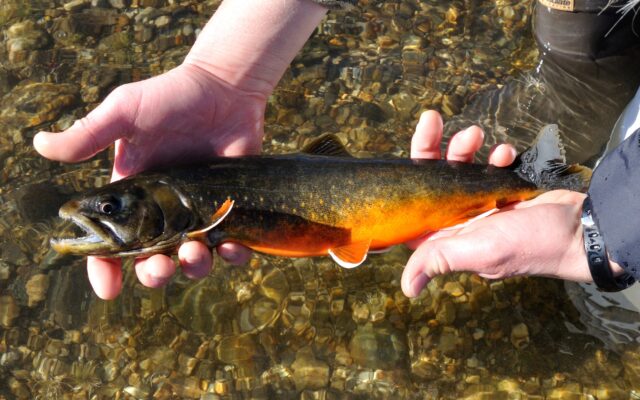
This is how Maine should protect the rare Arctic charr
By Bob Mallard
In a recent column, I challenged Maine’s rare native Arctic charr being lumped in with relatively common brook trout and hatchery-raised hybrid splake as part of the General Fishing Laws and Definitions. This generated a lot of discussion, with the general consensus being that it should be changed. The most common questions were how it could be done from a fishing law book standpoint and what would be appropriate in regard to a specific general law for Arctic charr.
I would suggest that Arctic charr should be protected under general law by a 10-inch minimum length requirement and a two-fish daily bag and possession limit.
As previously noted, Maine’s inland fishing general law establishes an aggregate daily limit for all species, irrespective of any water-specific laws in place for that species. It also sets the possession limit for the species. In cases where no water-specific law is in place, the daily bag limit and minimum length limit revert to general law. In most cases, the general law is the minimum protection provided to that species.
All managed game fish in Maine are covered under general law.
There are a few things to consider. First, the general law for brook trout, which presently includes Arctic charr, was designed with brook trout in mind, not charr, nor even splake. Charr are listed as a secondary species within the multi-species grouping. Arctic charr are notably rarer and less frequently targeted by anglers than brook trout, which are Maine’s most common salmonid and most popular game fish.
While the general law daily bag limit for brook trout in the North Zone is five fish, eight of the 10 native Arctic charr waters in the zone have a two-fish limit. Wadleigh Pond has a post-reclamation catch-and-release regulation and Wassataquoik Lake in Baxter State Park has a five-fish limit. All eight waters have a special regulation (either S-19 or S-17) that reduces the daily limit below the general law.
There are two native Arctic charr waters in the South Zone: Floods Pond and Green Lake. The former is closed to fishing, as it has been Bangor’s drinking water source since 1959. The South Zone has a two-fish general law daily limit on brook trout in lakes and ponds. There are no brook trout-specific laws on Green Lake, so the daily bag limit on Arctic charr is two fish under the general law.
The general law minimum length for brook trout in both the North and South Zones is six inches. Seven of the 10 native Arctic charr waters open to fishing and harvest have a six-inch minimum length limit default under the general law. One, Black Pond, has an “only one may exceed 14 inches†special clause, likely done to protect large brook trout, as charr over 14 inches are not common.
Three of the 10 native Arctic charr waters open to fishing and harvest have a special regulation minimum length of 10 inches and only one may exceed 12 inches (S-17). Again, I suspect the intention of the S-17 regulation is to protect brook trout, not Arctic charr, as it is likely the latter rarely reach 12 inches in these waters.
When you consider that 11 of 12 native Arctic charr waters in Maine currently have a two-fish limit, it would make sense that this would become the species-specific general law daily bag and possession limit for charr. While only one water would be affected and require a change from five fish to two fish, the aggregate daily limit and possession limit would be reduced from five fish to two. That would be prudent when you consider the rarity of the species and its increasing popularity with anglers.
As for a general law minimum length for Arctic charr, the 10 native waters open to fishing and harvest have either a six-inch or 10-inch limit, irrespective of any clause applying to fish over 12 or 14 inches. Neither of those has a notable impact on charr.
A six-inch minimum length limit, as is in place for seven of 10 charr waters open to fishing and harvest, provides minimal protection for what is, by any reasonable definition, a rare fish. When you consider that three waters now have a 10-inch minimum, it would make sense to use this as a new and more protective general law.
Under this proposal, all Arctic charr waters open to fishing, except Wadleigh Pond, would fall under the new proposed general law (two fish, 10-inch minimum length). All but one water would retain their current daily bag limit.
While the seven waters with a six-inch minimum length limit would be increased to 10 inches, with one losing its “one over 14 inches†clause, the three waters with a 10-inch minimum length would remain the same but lose their “one over 12 inches†clause.